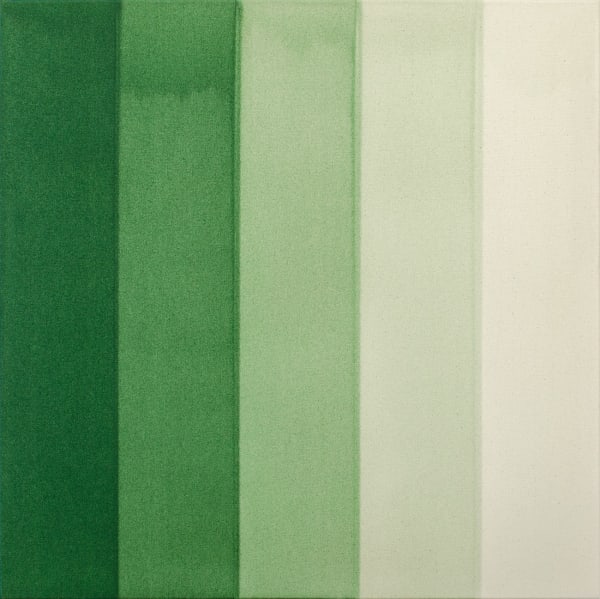Simon Morris, When each action opens
The connections between three types of my painting only occurred to me recently. It has been a decade since I last exhibited in Te Whanganui-a-Tara Wellington and likewise, these forms of painting developed over the past ten years. Meanwhile, they connect through the use of three common forms of painting language, all familiar to my practice: layering, dilution and colour mixing. In 2011, in my Daily Paintings I added, as a morning ritual on studio days, a single layer of paint, each narrower than the last. This became an exercise of engaging with the liquidity of paint, colour, edge, and control. The 2014 Water Colour Paintings used a systematic process to dilute paint (with the help of mathematician Ed Abraham) that explored change through variables involving both time and application. This new wall painting.
When two colours become one (2021) extends my ongoing interest in painting techniques, acting as a starting point to again consider conceptual processes, colour mixing, and the time needed to occupy the space of the Jhana Millers Gallery. When two colours become one (2021) was first developed through a series of smaller-scale paintings I made on a residency at the Headlands Centre for the Arts in 2017. A one-hour bike ride from San Francisco, Headlands is in Marin County just over the Golden Gate Bridge on the West Coast. My studio was a large rectangle with most of its windows along the Northern side, along with a Western one which faces the Californian sun as it sets over the Pacific Ocean. For 10 weeks, I spent a large part of the time by myself, released from the usual demands of work and daily life back here in Aotearoa. I am truly very grateful that I had that opportunity to develop new work, to read, walk and meet people. When two colours become one emerged out of this fresh and expanded experience of time, while filtering new surroundings. In the work this translates into constantly shifting time structures and the direct engagement with colour as it transforms from one hue to another: a simple idea that opens toward a new form over time.
Action: The moment of painting is an act of focus. Each stroke an action, similar but different. With body length strokes, I apply paint directly to the wall, one action after another following the repeated form, sustained, steady, accumulating to fill the space. Both repetition and acceptance of variation occurs. Space: The Modern architecture of the gallery now meets the space of the painting. They come together as a connected experience, informing each other with shifting light and shifting position. Time: The time of the painting meets the time of the world. Direct sensations of colour and space can be independent experiences, but interrupted by other things. Colour: With one brush, two colours become one. Colour shifts from one stroke to the another. Temporality: Change is constant, everything impermanent. The wall painting will be painted over in time, and possibly remade in another space.
I would like to acknowledge the generous support of Fulbright New Zealand and the College of Creative Arts, Massey University for my time at the Residency.









